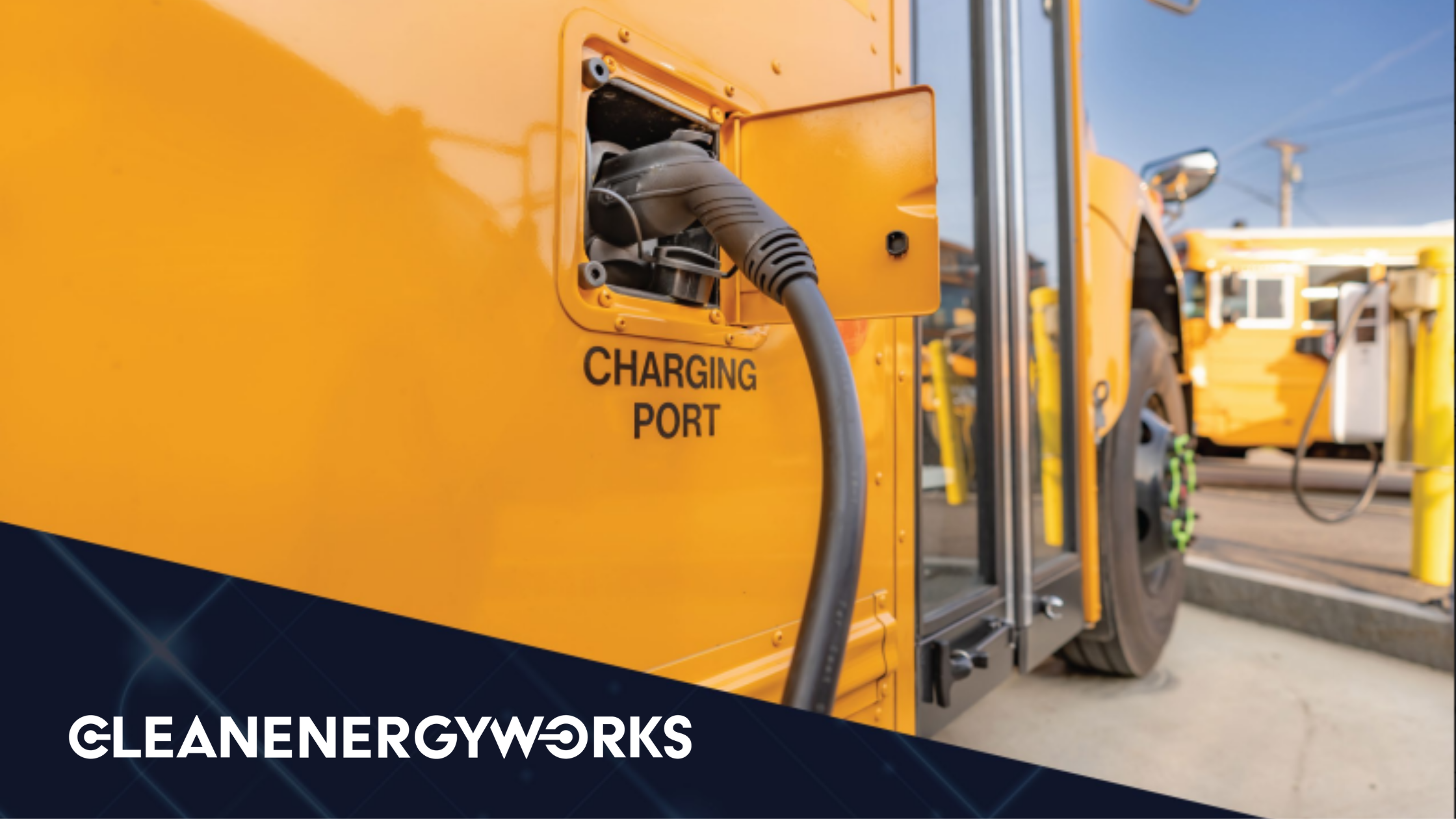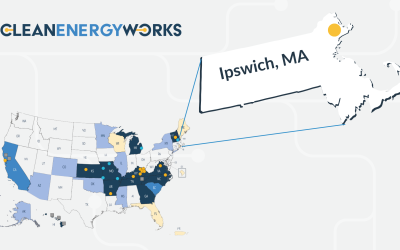The Infrastructure Investment & Jobs Act (IIJA) and the Inflation Reduction Act (IRA) have created a once-in-a-generation opportunity to electrify school buses. Utilities are rising to meet this historic moment by facilitating and accelerating the transition to zero emission school buses. Today, Exelon, the largest parent utility company in the United States and CALSTART released a white paper titled The Electric School Bus Transition: Accelerating Equitable Deployment Through Understanding Grid Impacts and Policy Solutions. Clean Energy Works and our partners at the World Resources Institute contributed to this paper as well as the Electric Power Research Institute (EPRI) and the Edison Electric Institute (EEI).
The Electric School Bus Transition showcases the benefits of electric school buses and highlights the role of the utility in facilitating and accelerating the transition to electric buses. Though the IIJA and the IRA are providing catalyzing funding for the transition at the moment, we know that federal funding alone is not enough to fully electrify all school buses in the United States. For each school district there is a complex set of infrastructure, operational and financial considerations needed to be taken into account. Utilities can play a central role to ease the transition through a wide variety of programs and services, such as inclusive utility investment programs. Utilities stand to gain resilience and flexibility benefits to the power grid through electric school buses, while communities gain access to reliable transportation and reduced greenhouse gas emissions.
Clean Energy Works contributed Appendix B: Equity Framework to The Electric School Bus Transition. This Framework is a practical approach to identify entry points for operationalizing equity in the development and implementation of policies and programs to deploy electric school buses. The Equity Framework distinguishes among four key dimensions of equity: Procedural, Recognition, Distributive and Restorative Equity. For each of these dimensions, there are key practical recommendations for utilities to integrate equity into the diverse roles they play in school bus electrification (Chapter 5).

Procedural equity addresses ways to ensure that the communities who will be most impacted by services and policies have meaningful ways to participate in planning and decision making.

Recognition equity demonstrates that utilities have a comprehensive understanding of the historical developments underlying contemporary disparities in access to energy and transportation options.

Distributive equity focuses on outcomes and speaks to whether communities equally share in benefits and burdens.

Reparative equity explores how utility policies and programs can remedy historical and present-day harms so that affected communities can be in a position to thrive in the future.
Every utility stands to gain from centering equity. Feedback from SEPA’s Inclusive Utility Investment Task Force shows that utilities are interested and enthusiastic about programs that address equity goals. Equity is not a set of charitable activities that provide no other return to utilities. Rather, equity can serve as a pathway for utilities to be more efficient and effective in achieving their business and energy management goals, while addressing inequities and improving the quality of life for students, teachers, bus drivers, and the local community.




